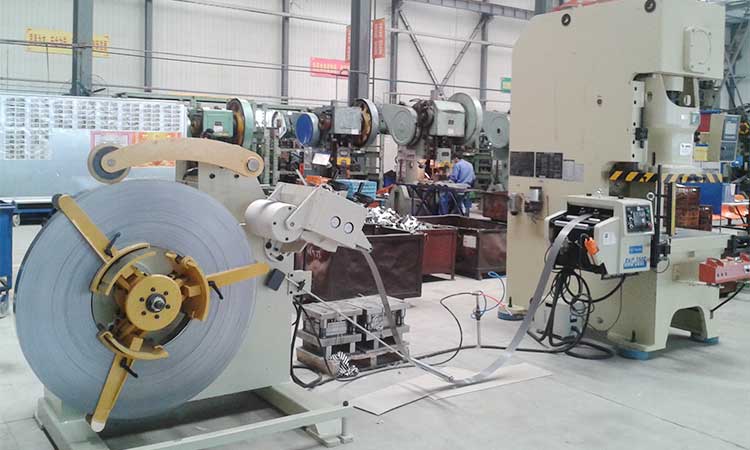Welcome to the world of precision manufacturing with RUIHUI’s Stamping Automation Solutions. This comprehensive guide provides valuable insights into the realm of RUIHUI, offering an in-depth exploration of their advanced machinery.
Dive into the introduction, explore diverse applications, and uncover the multitude of advantages they bring to the 3C industry and beyond.
The stamping process is widely employed in various industries, and it is used in the majority of household appliances. Stamping is a high-efficiency manufacturing method with low material consumption.
The stamping technique is well adapted to the manufacture of large batches of parts, is easy to mechanize and automate, and has a high production efficiency.
At the same time, stamping manufacturing cannot only strive for less waste and zero waste production, but it also has limited resources. The surplus material can also be utilized altogether.
Characteristics of the Process
Precision stamping processes play a crucial role in the 3C industry, which encompasses the manufacturing of consumer electronics such as smartphones, tablets, and other communication devices. The demand for intricate and precisely engineered components in this sector necessitates advanced technologies and specialized equipment. One key aspect of the process is the utilization of decoiler straightener feeder systems. These systems are designed to seamlessly handle and process various materials with precision, ensuring a smooth and efficient workflow.
In precision stamping processes within the 3C industry, the decoiler straightener feeder is integral for maintaining the quality and accuracy of the stamped components. The decoiler ensures a continuous supply of material, such as thin metal sheets, while the straightener eliminates any imperfections or distortions in the material before it enters the stamping press. The feeder, on the other hand, precisely positions the material for each stamping cycle, allowing for consistent and accurate production.
The 3C industry’s emphasis on miniaturization and high-performance standards demands a level of precision that can only be achieved through advanced stamping processes. Components such as connectors, brackets, and shielding elements require intricate designs and tight tolerances, making precision stamping a cornerstone of the manufacturing process. The integration of decoiler straightener feeder systems not only enhances efficiency but also ensures that each stamped part meets the exacting standards of the 3C industry.
In conclusion, precision stamping processes, coupled with the strategic use of decoiler straightener feeder systems, are pivotal in meeting the unique demands of the 3C industry. This synergy of advanced technologies enables manufacturers to produce high-quality, finely detailed components that are essential for the ever-evolving landscape of consumer electronics.
Due to the development of information technology, high-speed precision stampings are becoming more and more common in today’s life. High-precision stamping parts are everywhere around us, and we know that every progress of technology contributes to people’s life and work efficiency.
1. High reliability, because it is the electrical signal connection between subsystems, requires reliability to be maintained under harsh conditions such as shock, vibration, stress relaxation, and environmental corrosion. Plating is usually performed to ensure corrosion resistance
2. Large diameter or thin-walled parts can be produced using this technology. The minimum wall thickness of stamped parts is less than 0.3 mm (0.0127 inch), which can meet the requirements of small-sized electronic components.
3. High mechanical strength (stiffness) because it has a large bending moment during operation or processing. It also has good fatigue resistance when used for a long time or under severe vibration conditions. Therefore, in the stamping process, we can only use cold working process such as drop or bending without heat treatment process such as quenching or tempering after forming; otherwise we may have warpage deformation due to thermal expansion of different materials during the heating process
4. Excellent electrical performance (high current-carrying capacity), because it is the electrical signal connection between subsystems, its ability to carry large currents should be large enough not to affect the performance of other components that work with it. The component’s material must also have good thermal conductivity to generate heat during operation


